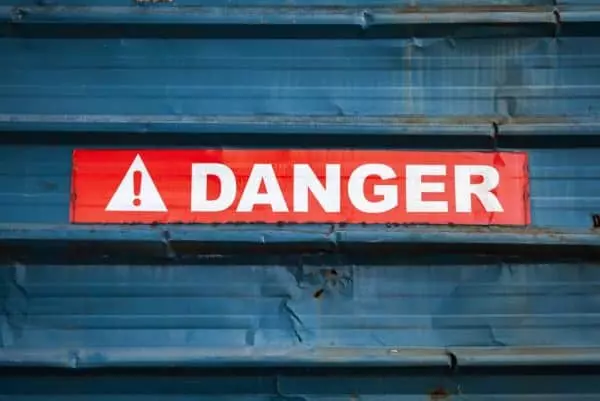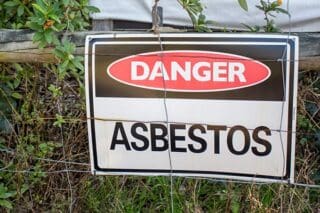
Though there is better awareness around asbestos and its dangers in recent years, there are still many misconceptions around the mineral and its health risks. Education on the toxin itself, like places it may be found naturally and the many asbestos products used in the past and present, as well as the asbestos-related diseases that may develop as a result of exposure are vital to prevention.
While the general public has a better recognition that asbestos is a threat to our health, a common question many still have is how much asbestos exposure is dangerous?
No Amount of Asbestos Exposure Is Considered Safe
To put it simply, even brief exposure to asbestos can potentially lead to health risks like mesothelioma, lung cancer, pleural effusions, pleural plaques and other asbestos diseases after a long latency period. This is just what makes the toxin so dangerous in the first place. The danger of exposure applies for all six types of asbestos, too, though researchers have stated some types are more dangerous than others, like crocidolite asbestos. The most common form, chrysotile asbestos, accounts for about 95% of asbestos used in the past that remains in numerous buildings, homes, and schools. As such, it accounts for the most health problems, but again, all types of asbestos can lead to the same risks.
Any exposure is dangerous because of how the fibers release into the air. Any disturbance to an asbestos-containing material can cause many microscopic asbestos fibers to be released into the air, easy to be inhaled by anyone in the area. They are invisible to the human eye, and many are exposed without even realizing.
Just one brief exposure to small amounts of asbestos can lead to dire consequences. Because of the durability and rigid quality of the fibers, the body cannot break down the foreign toxin and get rid of it. Instead, the fibers will inflame and scar the linings of the lung, abdominal cavity or even heart over time and can develop into mesothelioma or another asbestos-related illness. Early signs of these diseases are also nonspecific, often leading to misdiagnoses and patients facing a more advanced stage of cancer by the time a proper diagnosis is made.
Considering the amount of asbestos still hidden in thousands of buildings, the dangers aren’t going away anytime soon. For centuries, asbestos was used in countless products and industries around the world. Even after the health problems were first realized and scientifically proven back in the early to mid-1900s, asbestos continued to be used and is still used (though not as robustly) today. This means people continue to be at risk of exposure, and likely will be for many years to come.
Who Is Most at Risk?
While it is clear that any amount of exposure to asbestos can present serious health risks, there are many individuals who face an increased risk because of their occupation. Industries like construction, firefighting, plant workers, and mechanics especially continue to face exposure today because of all of the past uses of the toxin. Veterans also make up one of the largest groups of mesothelioma victims because of how widely asbestos was used in all branches of the military.
Though no amount of exposure can be considered safe, long-term exposure to asbestos materials will certainly increase risk of developing one of these diseases. There are regulations in place to help protect workers. For instance, the Occupational Safety and Health Administration (OSHA) has requirements around the safety equipment that needs to be provided to workers, as well as ensuring the asbestos concentration in the air is at safe levels with the proper equipment over an 8-hour workday. Even low levels of asbestos in the air can be dangerous, especially if workers are working without the proper protections – which happens often when they are unaware of the toxin’s presence.
Other government agencies, like the Environmental Protection Agency, also have regulations in place to help protect workers in industries not covered by OSHA. However, many advocates still feel that the asbestos laws are simply not enough to truly protect asbestos workers and the public from exposure.
It’s estimated that over 125 million people are exposed to asbestos on the job each year. In most recent studies, researchers found there is a global mesothelioma death rate of about 40,000 each year, on top of all the other asbestos-related deaths. Workers exposed on the job can also unknowingly put their family members at risk. Secondhand exposure is very common when asbestos dust is brought home on clothing or equipment used on the job, so something more needs to be done to prevent exposure.
The Need for an Asbestos Ban
Despite the clear evidence that asbestos causes numerous severe health problems like mesothelioma, asbestos is still not banned in the United States or the majority of the world. In fact, in some countries like Russia, the asbestos industry is booming and vital to their economic wellbeing. Most recently, one of the top asbestos producers in the world, Brazil, announced a ban on asbestos, which was a huge victory in protecting millions of people from exposure. But there is still a lot of work to be done.
Currently, the EPA is evaluating ten toxic substances, including asbestos, but the future of these evaluations is on shaky grounds with the current administration. Officials investigating these health hazards have so far released scoping documents, and advocates were shocked to see that many long-time, past uses of asbestos were being ignored. But until these past uses are removed and cleaned up and asbestos use is completely banned, exposure statistics will remain the same and mesothelioma and other diseases will continue to claim lives.




